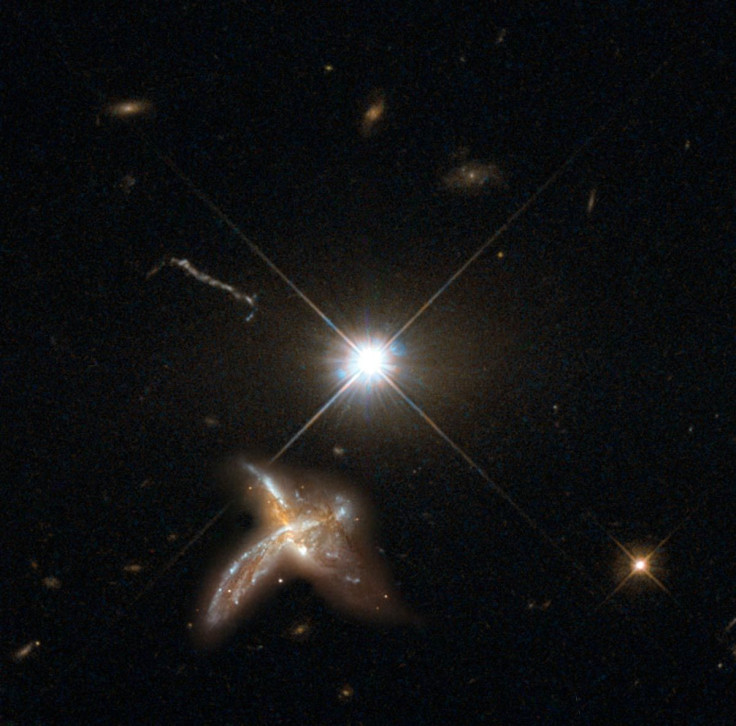Hyperactive Star-Producing Galaxy Discovered, Could Explain Massive Galaxies In Early Universe

The existence of massive galaxies and supermassive black holes in the early universe has flummoxed scientists ever since they were discovered because we can’t explain how objects so large could have formed in just a couple of billion years after the Big Bang. There have been a couple of recent attempts to explain how supermassive black holes are formed in such little time, and the recent discovery of a new kind of galaxy could solve the mystery of the existence of early massive galaxies as well.
In a paper published online Wednesday in the journal Nature, an international team of researchers described four galaxies, discovered almost by accident, that likely produce stars at the astonishing rate of more than 100 solar masses every year. That is hundreds of times faster than the rate at which our galaxy, Milky Way, produces stars. The hyperactivity of these galaxies, each of which formed less than one billion years after the Big Bang, could explain the existence of massive galaxies — home to hundreds of billions of stars — at a time when the universe was only 10 percent of its current age.
Read: Star Formation In Early Universe Could Have Been Faster Than Previously Thought
The four galaxies were discovered when the team was actually looking at quasars — supermassive black holes sitting at the centers of gigantic galaxies and the brightest objects in the universe — and trying to study star formation in the host galaxies.
“We were looking for something different: for star formation activity in the host galaxies of quasars. But what we found, in four separate cases, were neighboring galaxies that were forming stars at a furious pace, producing a hundred solar masses’ worth of new stars per year,” Roberto Decarli from the Max Planck Institute for Astronomy (MPIA), who led the research, said in a statement Wednesday.
Fabian Walter, also from MPIA and a co-author on the paper, drew a possible link between the quasars and the newly discovered galaxy, saying the find wasn’t a complete coincidence.
“Very likely it is not a coincidence to find these productive galaxies close to bright quasars. Quasars are thought to form in regions of the universe where the large-scale density of matter is much higher than average. Those same conditions should also be conducive to galaxies forming new stars at a greatly increased rate,” Walter said in the statement.
Read: Dark Matter Was A Small Fraction Of Galaxies In Early Universe
However, it is not yet certain if these hyperactive galaxies are the precursors to the massive galaxies in the early universe that scientists have previously predicted. Proving that requires further study.
“Whether or not the fast-growing galaxies we discovered are indeed precursors of the massive galaxies first seen a few years back will require more work to see how common they actually are,” Eduardo Bañados from the Carnegie Institute in Pasadena, California, who also worked on the study, said in a statement.
The observations made by the team showed another interesting find: the earliest-known merger of two galaxies. Galaxy mergers are known major drivers of galaxy growth, and the observation provides the first direct evidence that such mergers were happening in the very early stages of galactic evolution.
© Copyright IBTimes 2024. All rights reserved.





















